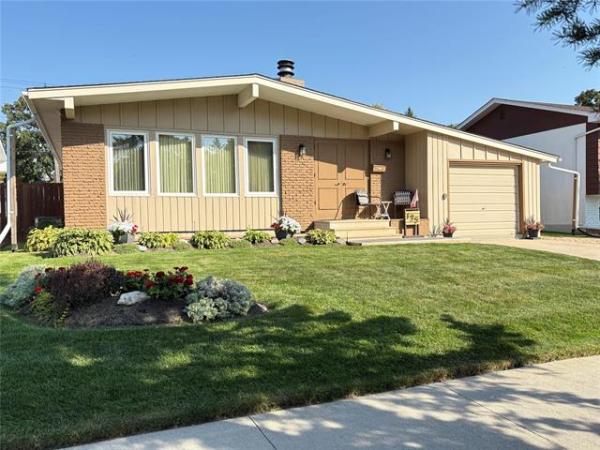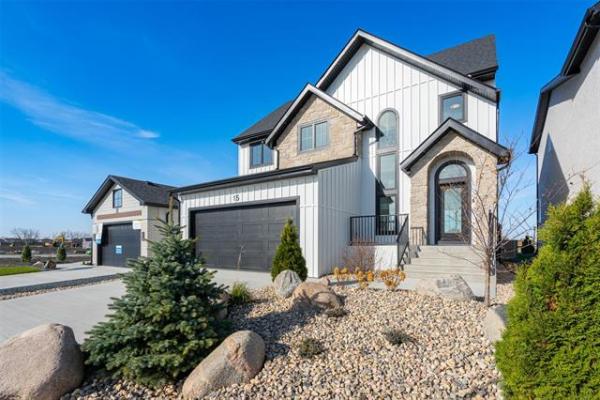QUESTION: My neighbour and I have the same problem. Both houses were built in 1957 and they have, what I think, is a cleanout hole for the chimney. At this time of year, and when there is a heavy rain, we get water seeping into our basements through these cleanouts. The water comes in through this area, leaks down the foundation wall and then runs along the floor.
My chimney is still in use for venting the hot-water tank. My neighbour no longer uses his chimney. Is there a way to stop the water from coming in through this cleanout area?
Mark Starodub, Selkirk, MB
ANSWER: Water leakage into basements is something most homeowners, especially in older homes like yours, worry about at this time of year. There are a few simple preventive measures you can take, but these may only help to minimize the problem rather than eliminate it.
The top item to address is the grading and water management outside the home. Everything should be done to grade the soil away from the home for the first two to four metres. Sloping the soil in this way will help prevent melting snow adjacent to the home from running toward the foundation. If this moisture is not allowed to sit or pool against the concrete walls while the ground begins to thaw, there is much less chance of leakage through small cracks or openings.
Once the snow is gone and the ground begins to warm further down, proper grading can also prevent frequent spring rains from saturating the top layers of soil. If this soil becomes super-saturated, it will not be able to drain properly to the weeping tiles below because the ground is still frozen at lower levels. If this occurs, there's a good chance of water being forced through the foundation by hydrostatic pressure.
The other main item to inspect is the roof drainage system. The majority of leakage I see in basements occurs where downspouts terminate beside the foundation. Installing downspout extensions that divert the water away from the foundation should go a long way in stopping periodic seepage. This is particularly important if a downspout is discharging near your old chimney, where you are seeing the water come in.
Most older brick chimneys leak for several reasons. The first reason is normally due to damage to the chimney cap or metal liner. In those cases, rain, snow or melted ice can leak into the chimney near the top and run all the way down until it hits the bottom of the cleanout. Once it has nowhere else to go, it will seep in through the cleanout or the brick nearby.
If the metal liner is corroded or damaged, the warm exhaust from your water heater may also leak through, hit the cold brick surrounding the liner, condense and freeze. This frost will then melt on a warm or sunny day in late winter or early spring and run down the inside of the chimney until it leaks into your basement. While this may be occurring somewhat in your home, I think the underlying cause of your problem is lower down.
Another cause of leakage can be chimney deterioration below grade. Because brick chimneys are porous, and the mortar that holds the bricks together deteriorates over time, leakage can occur.
To prevent leakage through the porous brick underground as well as the support or foundation beneath, damp-proofing material will have been installed when the house waas built. This bitumen-based coating usually lasts for several decades, but will have a tendency to lose its effectiveness after many years. As this coating wears out, water from the soil will begin to erode the old mortar joints, allowing even more moisture to seep into the chimney. Once this becomes severe enough, this water may leak through the only real opening on the interior, the cleanout.
While it may be possible to partially stop the water by filling in the old cleanout with mortar or fine concrete, it's not a permanent solution. Eventually, it will be necessary to excavate around the chimney on the exterior and re-apply the damp-proofing or a newer waterproofing membrane. This repair will cover any existing gaps in the brick or concrete, preventing water from seeping in from the damp soil surrounding the chimney. If the bricks or mortar joints are badly deteriorated, further repairs may be required before damp-proofing, but that can only be determined after digging away the adjacent soil.
While there's a chance that your metal chimney liner or cap is rusted and leaking, with moisture coming in near the top of chimney, deterioration below grade is more likely. If so, the only effective way to prevent rain and melted snow from leaking into your home is to dig around the base of the chimney to expose the old bricks and see what work needs to be done to repair and waterproof them.
Ari Marantz is the owner of Trained Eye Home Inspection Ltd. and the President of the Canadian Association of Home & Property Inspectors - Manitoba (www.cahpi.mb.ca). Questions can be e-mailed to the address below. Ari can be reached at (204) 291-5358 or check out his website at www.trainedeye.ca.
trainedeye@iname.com



